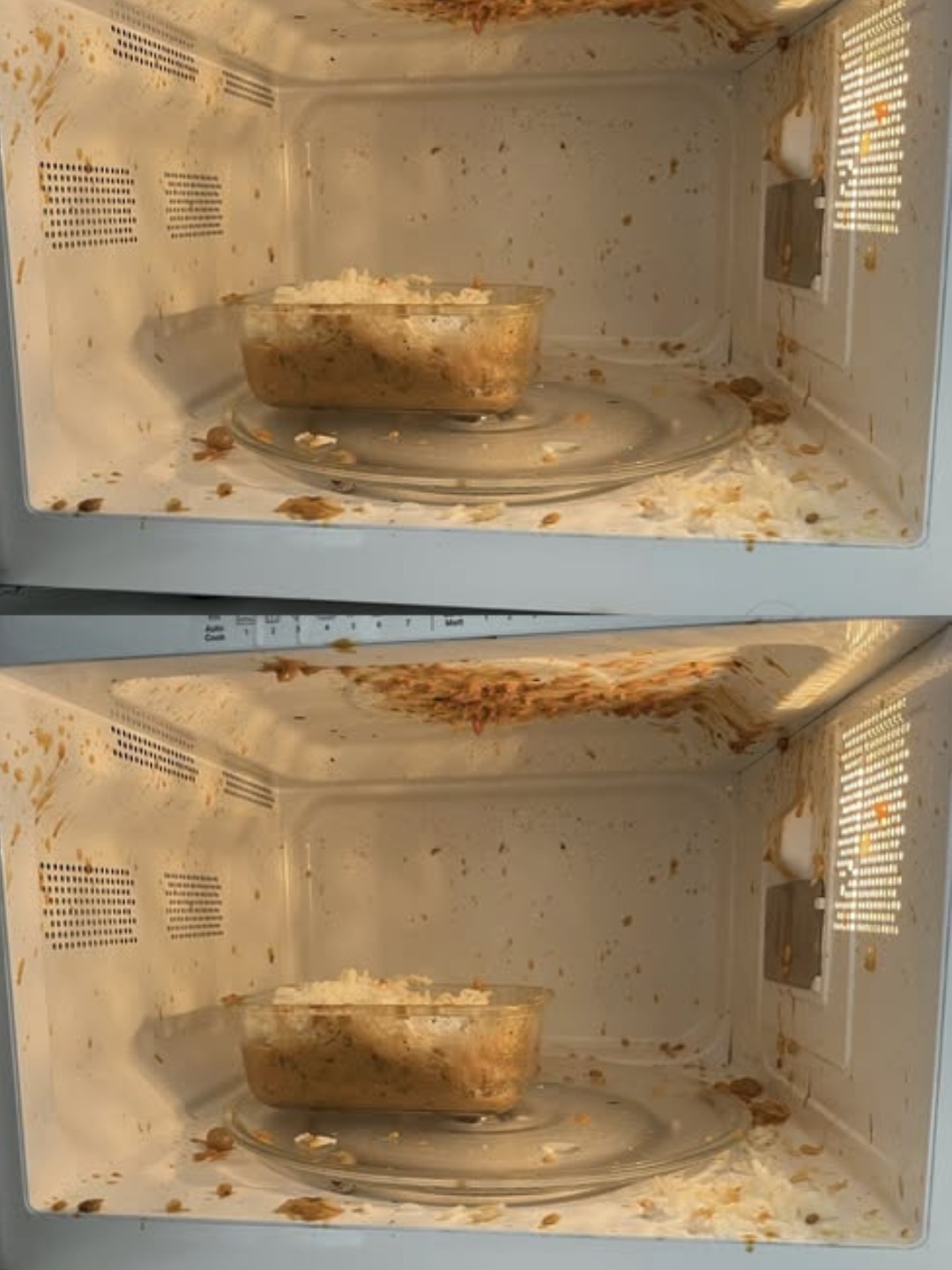Safer alternative: Warm bottles by placing them in a bowl of warm water — never in the microwave.
3. Whole Fruits (Especially Grapes)
Why it’s dangerous:
Grapes (and cherries, blueberries) can catch fire in the microwave.
When microwaved whole, the size and water content create plasma sparks — literally.
What happens:
A grape can turn into a mini fireball in seconds.
Safer alternative: Cut fruits in half or avoid microwaving them entirely.
4. Butter or Fatty Foods in Paper Towels
Why it’s risky:
Paper towels can catch fire if they dry out and overheat.
Fatty foods like bacon or butter release oil that soaks into the paper — a fire hazard.
What happens:
Smoke, flames, and a ruined microwave.
Safer alternative: Use a microwave-safe plate with a splatter lid.
5. Rice (Especially Leftover)
Why it’s risky:
Cooked rice can harbor Bacillus cereus , a bacteria that survives cooking and multiplies at room temperature.
Microwaving doesn’t always kill it — and can make it worse if not heated evenly.
What happens:
Food poisoning with nausea, vomiting, and diarrhea — even if it tastes fine.
Safer alternative: Reheat rice thoroughly to steaming hot (165°F), and never leave it out overnight 6. Chicken or Meat (Unevenly)
Why it’s risky:
Microwaves heat unevenly — so your chicken might look warm but still have cold spots where bacteria survive .
What happens:
Undercooked meat = foodborne illness risk.
Safer alternative: Stir or rotate halfway through. Use a food thermometer to ensure it reaches 165°F.
7. Bread (For More Than 10 Seconds)
Why it’s gross:
Microwaving bread makes it chewy, rubbery, or hard — not warm and soft.
The rapid heating removes moisture and alters the starch structure.
What happens:
A bagel that feels like a stress ball.
Safer alternative: Use a toaster or oven for crisp, even warmth.
8. Takeout Containers (Especially Cardboard or Foam)
Why it’s dangerous:
Many takeout boxes are made of cardboard with metal accents or plastic coatings that can melt or catch fire .
Even if labeled “microwave-safe,” many aren’t tested for long-term use.
What happens:
Toxic fumes, melted plastic, or fire.
Safer alternative: Transfer food to a glass or ceramic microwave-safe dish Note: Can you microwave cardboard? Only if labeled microwave-safe — but when in doubt, transfer it. 9. Frozen Meat Without Thawing First
Why it’s risky:
Microwaving frozen meat often cooks the outside while the inside stays frozen .
This creates a breeding ground for bacteria.
What happens:
A steak that’s overcooked on the edges and raw in the center.
Safer alternative: Thaw in the fridge overnight — or use the microwave’s defrost setting carefully.
10. Herbs and Spices (Dry)
Why it’s pointless:
Microwaving dry spices doesn’t enhance flavor — it can burn or degrade essential oils.
What happens:
A smoky microwave and ruined seasoning.
Safer alternative: Add herbs and spices after reheating — they’ll taste fresher and more vibrant.
Final Thoughts: The Microwave Is Powerful — But Not Magic
The microwave is a kitchen MVP — but it’s not a cure-all.
Some foods just don’t play well with microwaves — whether due to safety , texture , or nutrition .
So next time you’re about to hit “Start”…
Pause.
Think.
Ask:
“Is this safe to microwave?”
Because sometimes, the best way to reheat food isn’t the fastest.
It’s the one that keeps you safe, satisfied, and far away from exploding grapes.
And once you know what not to microwave?
You’ll never look at your leftovers the same way again.
ADVERTISEMENT

